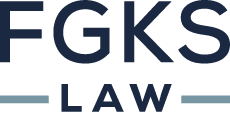CARES Act Signed Into Law
On March 27, 2020, the Coronavirus Aid, Relief, and Economic Security Act (CARES Act) was signed into law. The aim of the CARES Act is to provide financial relief to individuals and businesses in response to the economic fallout from the COVID-19 pandemic. There are four main categories of economic relief in the CARES Act: (1) forgivable loans to small businesses through the Paycheck Protection Program; (2) tax changes and credits for businesses and individuals; (3) additional unemployment benefits; and (4) direct cash payments to individuals. Below is a concise summary of these categories:
Relief for Small Businesses: The Paycheck Protection Program (PPP)
Overview: The CARES Act provisioned approximately $349 billion for federally-backed loans through the PPP, which is being administered by the Small Business Administration (SBA). The PPP allows businesses to receive a loan in the lesser amount of (1) $10 million; or (2) the sum of 2.5 times the average total payroll costs for the prior year. The loans are forgivable if requirements are met. The purpose of the PPP is to prevent layoffs and keep employees on payroll.
Use of Loan Funds: The funds from PPP loans can be used for the following:
- Payroll costs, which include salary, wages, commissions, and cash tips or the equivalent;
- Payment for paid-time-off, including vacation, parental, family, or sick leave, but not including leave for which a credit is available under the Families First Coronavirus Response Act (FFCRA);
- State and local taxes assessed on employee compensation;
- Payments to sole proprietors or independent contractors, but not to exceed $100,000 in one year (pro-rated for the covered period);
- Payments for group health care benefits, including insurance premiums;
- Interest payments;
- Rent; and
- Utility payments.
Eligibility: The following businesses are eligible for PPP loans:
- Small businesses that employ fewer than 500 employees;
- Sole proprietorships; and
- Independent contractors, including gig workers.
To qualify, the borrower must provide a good-faith certificate (among standard disclosures) stating that: (1) the loan is needed to continue operations due to COVID-19; and (2) the funds will be used to retain employees and maintain payroll.
Characteristics/Benefits of PPP Loans: The perks and benefits of PPP loans include:
- Loan forgiveness;
- No collateral or personal guaranty requirements;
- If an employer has already laid off employees, it can re-hire the previously laid off employees and will not be penalized for having a reduced payroll; and
- There is no “Credit Elsewhere Test,” as opposed to other loans available through the SBA.
Loan Forgiveness: Loan recipients are eligible for forgiveness for an amount equal to the total amount paid for qualified expenses over an eight-week period, starting with the loan’s origination date. The total forgiveness cannot be more than the loan’s principal amount.
To qualify for loan forgiveness, the employer must maintain its employees on payroll. Furthermore, those seeking forgiveness must provide documentation to their lender to demonstrate the funds were used for approved purposes.
Potential Lenders: The SBA is authorizing banks and other commercial lenders currently authorized to make SBA loans to originate and administer the program. The federal government is pushing for rapid adoption and expects to have numerous lenders in place within one week.
**Important Note—SBA Economic Injury Disaster Loans: The PPP does not supplant the SBA’s Economic Injury Disaster Loan program (EIDL), which may be a better option for certain businesses seeking relief. In short, the EIDL provides up to $2 million of financial assistance (actual loan amounts are based on the amount of economic injury) to small businesses or private, non-profit organizations that suffer substantial economic injury as a result of a disaster. The COVID-19 pandemic constitutes a disaster for the purposes of the program, and all of Ohio has been declared a disaster area.
In order to be approved for EIDL, the applicant must have acceptable credit history and be a business that is directly affected by COVID-19, offers services to businesses directly affected by COVID-19, or otherwise be indirectly related to an industry that is harmed by COVID-19.
The working capital loans provided by EIDL have interest rates of 3.75% for small businesses and 2.75% for non-profit organizations. The loans have terms up to 30 years. Loans over $25,000 require collateral. The loan funds may be used to pay fixed debts, payroll, accounts payable, and other bills that could have been paid had the COVID-19 disaster not occurred. The loans are not intended to replace lost sales or profits or for expansion.
Relief for Small Businesses and Individuals: Tax Changes/Credits
Overview: The CARES Act pushed through various tax changes to provide additional relief to individuals and businesses. Many of these changes require a detailed explanation not suited for this client alert. Thus, if you or your business have questions about any of the below tax changes, do not hesitate to contact an attorney at FGKS Law.
Tax Changes for Businesses:
- A one-year tax credit against a business’ 6.2% share of Social Security payroll taxes for (1) any business that is forced to suspend or close operations, but nonetheless continue paying its employees, and (2) for businesses which remain open but whose gross receipts for a quarter were less than 50% of what they were for the same quarter in 2019 (in this circumstance, the credit is limited to the business’ 6.2% share of Social Security payroll taxes equal to 50% of the qualified wages paid to each employee for the quarter, but not to exceed $10,000 for each employee for the year);
- Lifting the limit from 10% of adjusted taxable income to 25% for corporate charitable donations;
- Delaying the payment of employer payroll tax and self-employment tax from December 31, 2020, to a 50% payment by December 31, 2021, and another 50% payment by December 31, 2022;
- Allowing net operating losses from 2018 – 2020 to be carried back for up to five-years, and losses carried to 2019 and 2020 will be permitted to offset 100% of taxable income;
- Allowing an employer to pay up to $5,250 towards an employee’s student loan obligation on a tax-free basis (this is in addition to the tax-free payments towards an employee’s educational expenses);
- Increasing the limit a business can deduct its interest expense from 30% to 50% of adjusted taxable income for 2019 and 2020 (a partnership will have 50% of its suspended interest freed up to be deducted, while the other 50% remains suspended until the partnership allocates excess taxable income or excess interest income to the partner); and
- Reducing the Qualified Improvement Property (QIP) depreciable life from 39 to 15 years (this is more of a “fix” to QIP depreciation, rather than relief related to COVID-19).
Tax Changes for Individuals:
- Allowing a taxpayer to take money out of a qualified requirement plan without penalty for a “coronavirus-related distribution” of up to $100,000—among other things, a coronavirus-related distribution would include a distribution due to adverse financial consequences as a result of being quarantined, furloughed, or laid off or having work hours reduced, or being unable to work due to lack of childcare;
- Waiving certain required minimum distributions (RMDs) from retirement savings accounts;
- Temporary and retroactive (back to January 2018) lifting of the limitation on the amount an individual can use a net business loss to offset other sources of income; and
- Allowing up to a $300 above-the-line charitable contribution deduction for certain qualifying charities for those who do not itemize, and a temporary lifting on the limits on charitable giving for those who do itemize.
Relief for Individuals: Increase in Unemployment Benefits
Overview: Unemployment insurance now includes an additional $600 per week payment to each recipient for up to four months. This payment is in addition to any benefits the individual is already receiving through state unemployment insurance. The CARES Act also extends benefits to self-employed workers, independent contractors, and those with a limited work history. There is no waiting period.
Relief for Individuals: Direct Cash Payments
Overview: The CARES Act allows cash rebates of up to $1,200 per person and $500 for child dependents. This rebate is subject to phaseouts at $75,000 for single filers, and $150,000 for joint filers. It is unclear if the income phaseouts are based on 2018, 2019, or 2020 income levels.
If you have any questions about implementing any of the relief provided for in the CARES Act, or any other issues related to the COVID-19 pandemic, please do not hesitate to contact one of the attorneys at FGKS Law at 937-492-1271.





